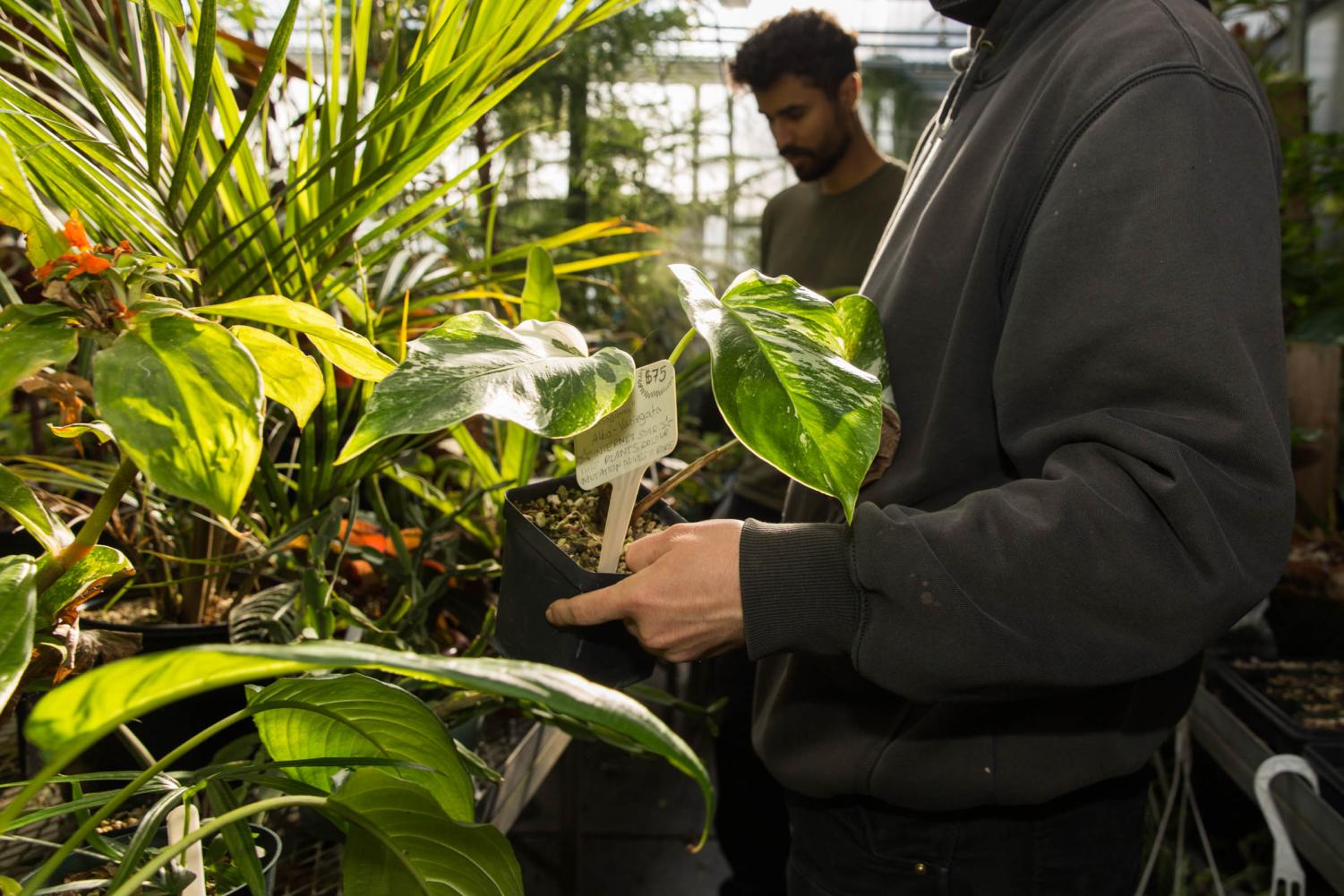



The greenhouse encourages anyone on campus to explore and learn about its plants.
Nov 17, 2022
Elliot Levin walks through the greenhouse admiring his favorite plants. The space is alive with colors and smells, as thousands of plants occupy every inch of the room.
Levin is the manager of SF State’s Greenhouse, a place for students to learn about diverse and exotic plants. He believes it isn’t being used to the extent it should be, as it is currently used primarily by biology students.
“It’s massively underutilized, a lot of this just sits here,” Levin said. “I would love to see more interdisciplinary stuff, I’d love to be able to help other departments, but currently, under how the funding works, I don’t know what the possibility of that is.”
Levin believes there are several ways for students who aren’t in biology courses to use the greenhouse, such as to study the social implications of having plant collections, evolution, ecology, conservation science, or even by art students to design pots.
There are over 2,000 plants in the greenhouse. They are divided into three rooms — the arid room, which features dry region plants, the tropical room, which includes plants from tropical regions, and the highland cloud forest room, featuring plants from cooler climates.
Biology major Joshua Quarles, who works at the greenhouse 16 hours per week, said he has learned a lot about properly mixing soils for plants like cacti.
“Look at the cactus mix that’s sold in stores; that’s not cactus mix,” Quarles said. “Cactus mix needs way more rocky substrate, it needs more pumice, it needs more sand. We make all our soil substrate, we have pumice, bark, sand, charcoal and we mix it together for each specific plant. I really enjoy doing that.”
Venus Harvey is studying biology with a concentration in ecology, evolution and conservation, and is the other paid part-time employee for the greenhouse. They said that the most challenging things to grasp are the complex names of many plants and how to water them.
“Finding out when to water plants is something you learn over time,” Harvey said. “Remembering which ones like water on their leaves, which ones don’t, which ones hibernate in the wintertime, which ones hibernate in the summertime, it’s a lot of memorization. That’s definitely challenging for me.”
Among the vast collection are plants in danger of extinction. Tropical pitcher plants, or nepenthes, are carnivorous plants that snag prey in their pitcher-shaped traps. Many of them are expected to die off in the next five to 10 years. Michaelmoelleria vietnamensis is a plant from Vietnam that was recently discovered in 2020 and according to Levin, it’s already classified as critically endangered.

Also among the collection is one of the world’s oldest plants, Amborella trichopoda, from New Caledonia.
“It’s the earliest diverging angiosperm,” Levin said. “So that’s what we have evidence of [being] the first flowers on earth. So all other flowering plants are related to that one plant.”
The greenhouse offers a plant sale once per semester, which offers a wide variety of eccentric plants for a minimum of half of their market value that can’t be found at general nurseries. While it helps bring attention to the greenhouse, the sale is not their primary service.
“The plant sales are only a secondary thing that we do for fun,” Levin said. “The primary focus is supposed to be an educational collection that’s designed to be as broad as possible, to hit all those points of evolution, talk about how plants are related to one another.”
All proceeds from the plant sales go to the volunteers who work at the greenhouse. This semester’s sale occurred from Oct. 30 to Oct. 31 and the next one is expected to be during the spring semester.
Editor’s note: This article was updated to correct the location of where Amborella trichopoda plants are found. It previously said New Zealand, not New Caledonia.


Elliot Levin • Nov 17, 2022 at 6:00 pm
Amborella only found in New Caledonia, not found in NZ